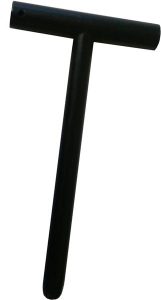
Alignment pins are commonly used to align and position workpieces. You can place them through a workpiece and into an adjacent hole of a machine or workholding solution. Alignment pins will only go into the machine or workholding solution if the workpiece is properly aligned and positioned. Below are five things to consider when choosing alignment pins.
#1) Style
There are different styles of alignment pins. While they are all used to align and position workpieces, each style features a different design. T-style alignment pins resemble the letter T, whereas L-style alignment pins resemble the letter L. You can also find shoulder-style alignment pins that feature a notched shoulder.
#2) Metric vs Inch
There are metric-sized alignment pins, and there are inch-sized alignment pins. Metric sizes, of course, use the metric system of measurement. Metric units include millimeters and centimeters. If you currently use metric sizes for your workpieces, you may want to choose metric-sized alignment pins. If you use inch sizes, on the other hand, you should probably choose inch-sized alignment pins.
#3) Material
You should consider the material when choosing alignment pins. Not all alignment pins are made of the same material. Some of them are made of carbon steel. Other alignment pins are made of stainless steel, powder-coated aluminum or other materials. If you’re planning to buy alignment pins, you should check to see what material or materials they are made of.
#4) Length
One of the most important things to consider when choosing alignment pins is the length. Whether inch-sized or metric-sized, they must be long enough. If an alignment pin is too short, it may not pass all the way through the workpiece, or it may fail to enter the workholding solution or machine underneath the workpiece. Before ordering alignment pins, take measurements of the workpieces with which you intend to use them. You can then select an appropriate length.
#5) Certification
Some alignment pins are certified to meet various standards. Monroe’s alignment pins, for instance, meet the International Organization for Standardization’s (ISO’s) 9001:2015 & AS9100D. These standards ensure quality. Alignment pins that ISO standards such as these are made with greater attention to detail, resulting in a high-quality design.
In Conclusion
For workpiece positioning applications that require fine tolerances, you can’t go wrong with alignment pins. Just remember to consider the style, metric vs inch sizing, material, length and certification when choosing them.
